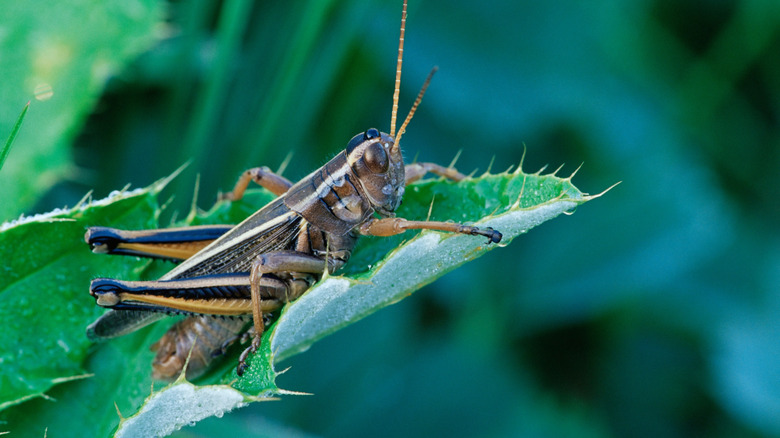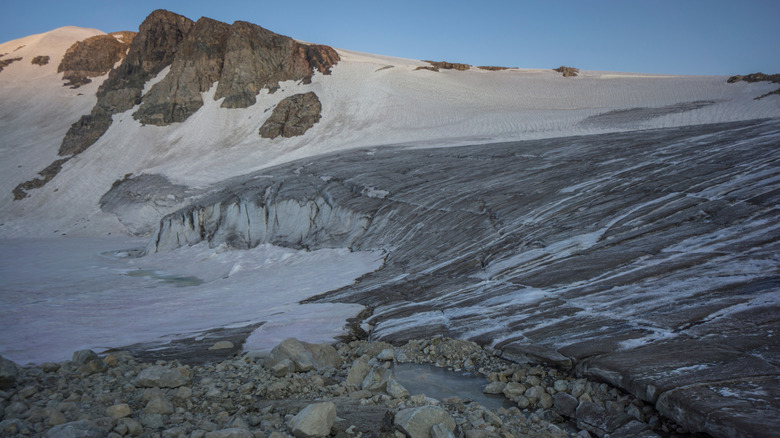An Ancient Glacier Hidden In Montana's Mountains Is A Bizarre Natural Wonder With Extinct Grasshoppers
In the rugged heart of the stunningly daunting Beartooth Mountains in Montana's Custer National Forest lies a rather unique ancient natural wonder: the aptly named Grasshopper Glacier. Unlike Montana's Glacier National Park, which is known as the crown of the continent for its unmatched beauty, this glacier has a greyish appearance and wrinkly texture. While some might not find this to be the most visually appealing description, the ice body, perched 11,000 feet above sea level, wears a color unlike the usual pristine white. But there's a unique reason behind its hue. This ancient glacier has preserved millions of grasshoppers, including Rocky Mountain locusts, which are believed to be extinct and have been swaddled in ice for thousands of years. It almost feels like stumbling upon a grasshopper museum in the icy wilderness.
The glacier was discovered in the early 1900s by Dr. J.P. Kimball, who had led an expedition to the site. The crew was left astounded by the sight of the frozen locusts, and photographer Anders Wilse described the glacier as having a texture similar to elephant skin. The particular species of locust encased here are believed to have been migrating when a severe storm trapped them in the glacier. As the ice melts over the years, a swarm of frozen grasshoppers has been gradually revealed. The changing climate has caused many of them to decompose. While the Montana glacier once stretched for miles, it's now rapidly disintegrating and may soon join the list of glaciers, reefs, islands, and forests travelers are flocking to under the growing "last chance tourism" trend.
How to reach Grasshopper Glacier
If you're eager to explore this one-of-a-kind destination, it's best to make a detailed plan. The closest major airport to Grasshopper Glacier is Casper-Natrona County International Airport, located about 250 miles away (roughly a four-hour drive), so it's your best bet if you're flying in. Whether you're arriving by air or on the road, you'll head toward the scenic Beartooth Highway and make your way to Cooke City, Montana, the closest town to Grasshopper Glacier at about 10 miles out. No matter how you get there, the location is just the beginning of your adventure. From Cooke City, you'll continue toward Lulu Pass via Goose Lake Road. This stretch is rough and stays snow-covered for much of the year, with access typically limited to July through September, so timing is key. You'll then drive up to the boundary of the Absaroka-Beartooth Wilderness, and the last 4 miles will be on foot till you get to Goose Lake.
The trail is not a very difficult one to hike, plus it's fairly short. It would be a good idea to pack rain gear, though, as the weather fluctuates quite a bit. Bear spray is a must as the region is replete with grizzlies, and there are procedures to follow if you're camping or hiking and see a bear. Once at Goose Lake, make your way up a narrow ridge connecting Sawtooth Mountain and Iceberg Peak. This is where you'll finally come face-to-face with the uniquely stunning Grasshopper Glacier. Tucked along the slope of Iceberg Peak, its jaw-dropping beauty layered with its fascinating history will leave you with an experience unlike any other.

